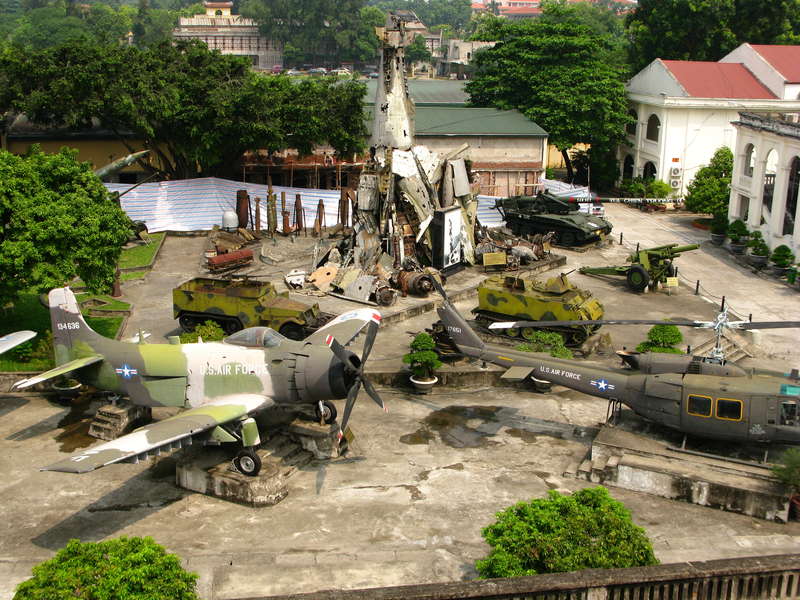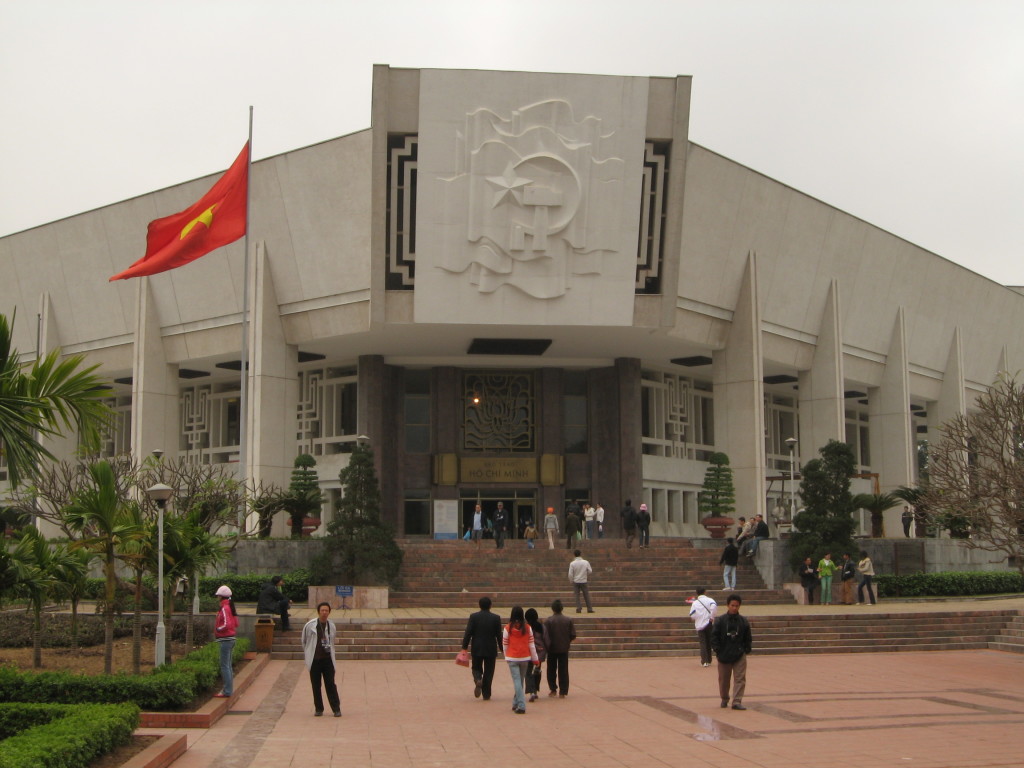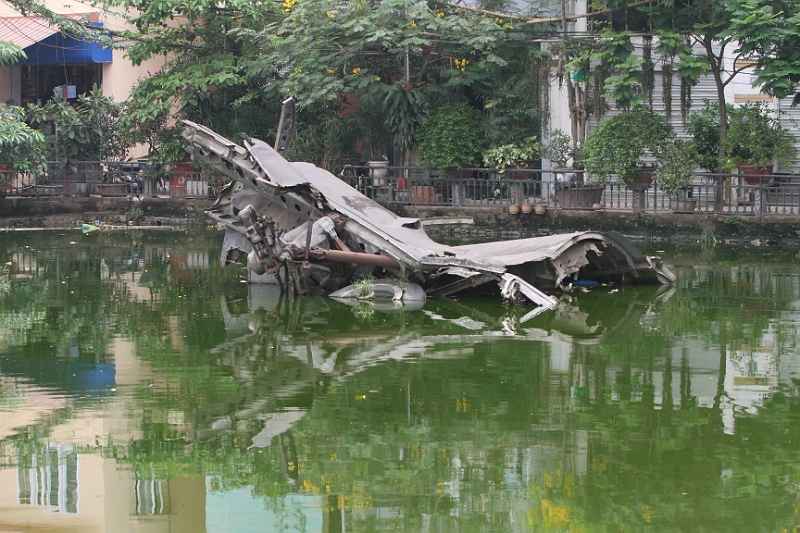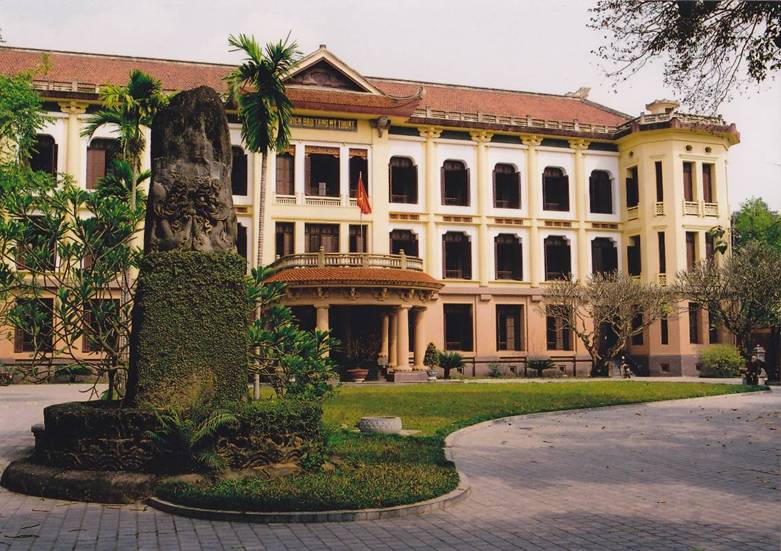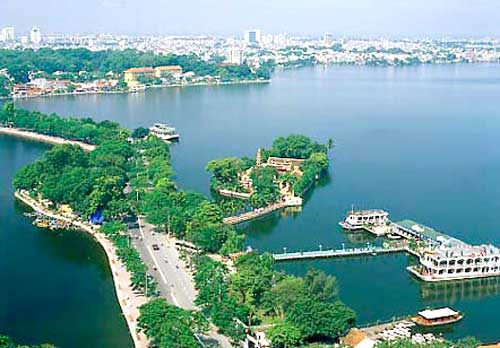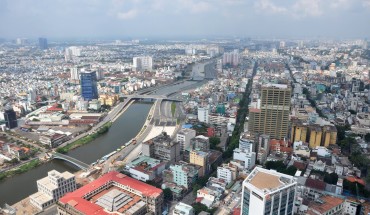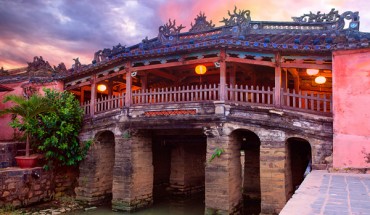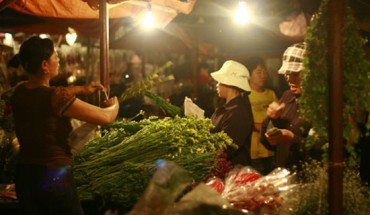Army Museum
This museum presents the Vietnamese side of the country’s struggle against colonial powers. There are three buildings of odds and ends from both the French and American wars here, including evocative photos. Most interesting, though, is the actual war equipment on display, including aircraft, tanks, bombs, and big guns, some with signs indicating just how many of which enemy the piece took out. There’s a tank belonging to the troops that crashed through the Presidential Palace gates on April 30, 1975, Vietnamese Liberation Day. Outside sits a spectacular, room-size bouquet of downed French and U.S. aircraft wreckage. Also on the grounds is Hanoi’s ancient flag tower (Cot Co), constructed from 1805 to 1812. The exhibits have English translations, which makes this an easy and worthwhile visit.
Ho Chi Minh’s Mausoleum
Modeled after the Mausoleum of Lenin in Russia, Ho Chi Minh Mausoleum is one-of-its kind in the world. The building is dedicated to house Ho Chi Minh’s preserved body and a place where visitors can express their admiration and gratitude towards the national hero while. It is popularly known among Vietnamese as Uncles’ Mausoleum, for the intimate and familiar atmosphere Ho Chi Minh always created when he was alive. Built over 2 years from 1973 to 1975, the Mausoleum is also a lively illustrator of national unity.
Ho Chi Minh Museum
English-language explanations help to piece together the fragments of Ho’s life and cause at this museum tribute, and there are personal items, photos, and documents detailing the rise of the nation’s Communist revolution. The rhetoric is laid on a bit thick, but all in all it’s an interesting and informative display. Completely unique to Vietnam are the conceptual displays symbolizing freedom, reunification, and social progress through flowers, fruit, and mirrors.
Ho Chi Minh’s Residence
Ho’s residence, the well-known house on stilts, is behind the Presidential Palace, a gorgeous French colonial building built in 1901 for the cut French governor. Shunning the glorious structure nearby, Ho instead chose to live here from 1958 to 1969. Facing an exquisite landscaped lake, the structure does have in charm, and the spartan room is an interesting glimpse into the life of this enigmatic national hero. The basement was a meeting place for the politburo; upstairs are the bedroom and a study, and little details like his phone and walking cane are kept behind glass. Behind the house is a garden of fruit trees, many of them exotics imported from other lands, including miniature rosebushes and areca trees from the Caribbean.
Huu Tiep Lake and the Downed B-52
This is not a sight that will knock you off your feet for its size or beauty: In fact, what brings many here is that it’s an ordinary neighborhood, a maze of quiet lanes broken only by a small pond and, in the brackish water, the wreckage of an American B-52 shot down during the Christmas air raids of 1972. Many folks, veterans among them, find that a visit here puts a perspective on the war and that the rusting wreckage brings our abstract historical impressions back to the concrete present; others see landing gear, struts, and metal sheathing in a grungy pond.
There’s a partly submerged memorial plaque, and the area is cordoned off; entrance fees are soon to follow, no doubt. Most taxi drivers know it, or some creative charades will get the point across. Drivers will drop you off at the head of the alley (Lane 55) leading to the sight (a handwritten sign reads B-52 with an arrow).
One-Pillar Pagoda
To the right of the Ho Chi Minh Museum is the unique One- Pillar Pagoda, a wooden structure built in 1049 that sits on stilts over a lake. A king of the Ly Dynasty, Ly Thai Thong King had it built after having a dream in which Bodhisattva Avalokitesvara, the goddess of mercy, presented him with a lotus flower. The existing pagoda is a miniature reproduction of the original, which was said to represent a lotus emerging from the water. It is certainly interesting, and a prayer here is said to bring fertility and good health. It’s best to wear something full-length (skirt or trousers), not shorts.
Vietnam National Museum of Fine Arts
This very worthwhile arts museum features Vietnamese art of the 20th century, up to the 1970s or so. While the presentations are a bit crowded and rustic, there are explanations in English. Much of the art is out-standing, although you won’t really see any works of an innovative or controversial nature.
Entire rooms are devoted to the Vietnamese style of lacquer and silk painting, woodblock, and folk art. Techniques are explained a nice touch. Interesting also are the modern works of wood statuary interspersed among the exhibits. Some are patriotic in nature, depicting daily life or events during the war or done in Soviet-influenced caricature with heavy- limbed peasants striking triumphant poses or depictions of the brotherhood of the army and the working class. The top floors are devoted to prehistoric artifacts and Buddhist sculptures, some of which are huge and impressive. Don’t miss the famous 11th-century goddess of mercy (Kouan Yin), with her thousand arms and eyes, in the far-left room on the second floor. Best of all, the museum itself is in an old colonial, and, unless there’s a tour group milling around, you can stroll around in relative serenity and rest on one of the many benches provided (no napping). The gift shop has some modern works of well known artists for sale and will also sell works displayed in thematic exhibitions. The museum will then registers and grant a certificate for the piece.
West Lake
Covering a broad area north and west of central Hanoi, West Lake is home to lots of recent housing developments. In fact, the east shore of West Lake is more or less the “Beverly Hills” of Hanoi, where the best and brightest young Hanoiam and expats call home. The lake is also steeped in legend and is bordered by several significant pagodas. Vietnam’s oldest pagoda, Tran Quoc, was built in the 6th century and is located on Cayang Island in the middle of the lake, a beautiful setting. An actual fragment of the Boddhi tree under which Buddha achieved Enlightenment was given as a gill from the prime minister of India in 1959 and now grows proudly in the main courtyard Constructed by an early Zen sect and a famous center for Dharma study, and later as an imperial feasting grounds, the temple has a visitor’s hall, two corridors, and a bell tower it still houses a group of diligent monks who carry out elaborate rituals for the dead on auspicious days (if a ceremony is underway, be conscientious and keep a distance, but visitors are welcome to observe). They recommend not wearing shorts here, but it is no enforced. All around the little peninsula that the island temple and its man-made walk way has created, you’ll see fishermen busy with long bamboo poles and oversize hand reels; they essentially twirl a large spool by hand, something that’s fun to watch, especially if they pull in something big.
Farther along the lake, Quan Thanh Temple, by the northern gate, was built during the reign of Le Thai To King (1010-28). It’s dedicated to Huyen Thien Tran Vo, the god who reigned over Vietnam’s northern regions. Renovated in the 19th century, the impressive temple has a triple gate and courtyard, and features a 3. 6m (12-ft. ) bronze statue of the god. West Lake is also a hub of local activity, particularly on weekends, when families go paddle-boating on it.


